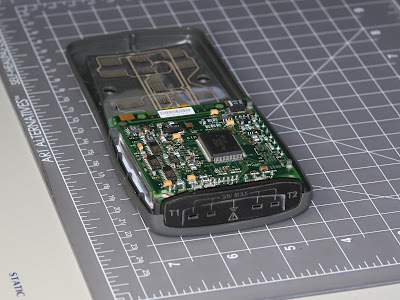I no longer maintain this page due to issues with SVG drawings on Blogspot.
The maintained copy of this page is here:
http://www.prolifictec.com/blog/2015/10/i2c-pull-up-resistors-on-modules-and-breakout-boards.html .
- Nick
Some of the modules and breakout boards for I2C slave devices contain I2C pull-up resistors. When multiple such modules are connected to the same I2C bus, their pull-up resistors appear in parallel. That results in a stronger effective pull-up resistance, which may prevent communication on the I2C bus.
You have to have pull-ups on the I2C bus.
Somewhere on the I
2C bus you have to have pull-ups in order to be able to communicate on the I
2C bus. The pull-ups may reside on the microcontroller board, or on the I
2C slave device's breakout board, or anywhere else on the I
2C bus.
Some microcontrollers have internal pull-ups. It's not recommended to use the microcontroller's internal pull-ups for I
2C. Still, internal pull-ups is much better than no pull-ups at all.
Watch out, though - you may end-up with pull-up that's too strong.
If pull-up resistors are too strong, that can prevent communication on the I
2C bus.
Strong pull-up means that the current through the resistor is relatively large. Stronger pull-up translates into smaller resistor value.
Weak pull-up translates into a larger resistor value.
(
Stiff means the same as
strong, when describing pull-up resistors. This terminology is not limited to I
2C. It applies to pull-up and pull-down resistors in other types of circuits too.)

Suppose all three boards in this diagram came with pull-up resistors installed. The 2.2 kΩ value is common for an I
2C bus running at +5V. Notice however that R2, R4, R6 all are connected between SCL and Vdd. They are in parallel, and they act as one 733 Ω resistor. This combined pull-up is too strong I
2C. That can prevent communication on the I
2C bus. (Similar for the pull-up resistors on the SDA line.)
If these resistors can spoil the I
2C bus, then why are they designed into the breakout boards in the first place? I'm guessing that it must have been a compromise to create an easy out-of-the-box
experience. A lot of I
2C first-timers don't know that pull-ups are required. Some Arduino boards don't have I
2C pull-up resistors nor pads for them (Arduino Uno, Arduino Pro, for example). Some Arduino boards have unpopulated pads for I
2C pull-up resistors (Arduino Mini Pro, for example). A breakout board provides the pull-ups, and "it just works". That is, until too many breakout boards are connected in parallel.
Remedies
Of course, as soon as you realize that there are extra pull-up resistors you can simply remove them.
Some
breakout board suppliers are aware of the possible parallel pull-up scenario. Many of the
newer breakout boards have been designed with that in mind.
- Perhaps to partially address this, some of the breakout boards have I2C pull-ups which are half strength. They are weaker than the correct values for the I2C, but stronger than the internal pull-ups of a μC.
A typical such value is 4.7 kΩ . This is a compromise. The
number of modules that can be connected in parallel without removing
resistors is still limited. But a greater number of modules may be
connected before combined parallel pull-up becomes too strong.
- On some of the breakout boards, pull-up resistors are connected to
Vcc through solder blobs. A solder blob is easy to remove, then pull-up
resistors will not affect the I2C bus. (For example, see SJ1 in this SparkFun breakout board.)
- Some breakout boards have unpopulated pads for pull-ups. (For example, see R1 and R2 on this board.)
Related
I2C bus specification and user manual. Anyone working with I
2C should at least skim through it.
How to deal with multiple pull-up resistors on modules? That forum question was a point of departure for writing this post.
A case when ATmega's internal pull-ups were used for I2C. The oscilloscope screenshots show I
2C waveforms with internal pull-ups, and with proper external pull-up resistors.
Forum thread
Is there a correct resistance value for I2C pull-up resistors? and application note
I2C Bus Pullup Resistor Calculation.
EDN article
Design calculations for robust I2C communications. Concise article with diagrams showing I
2C
physical layer principles of operation.
Effects of varying I2C pull-up resistors. The article shows oscilloscope screenshots of good and bad I
2C signals.
Pull-up resistor and pull-down resistor explained















